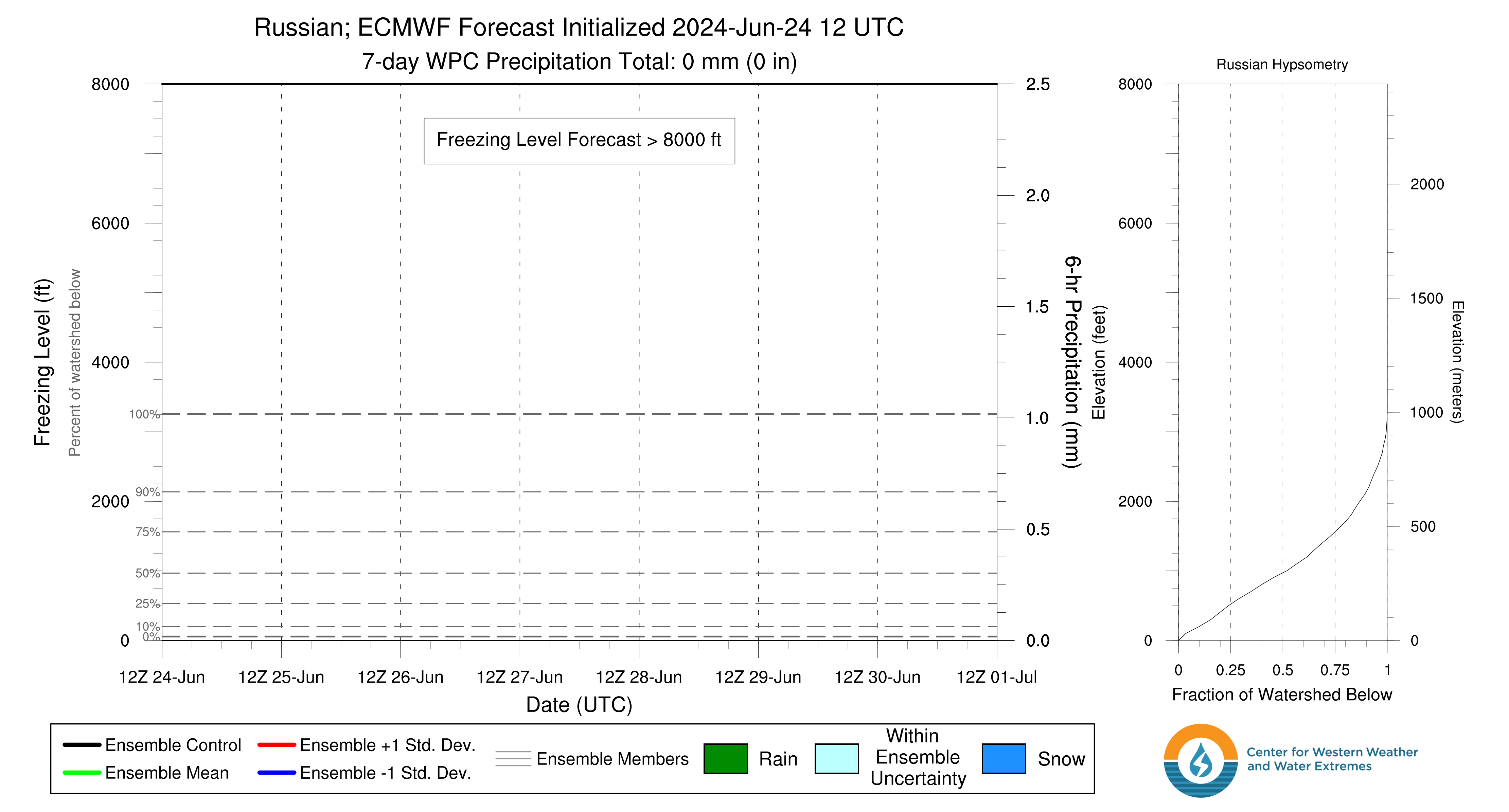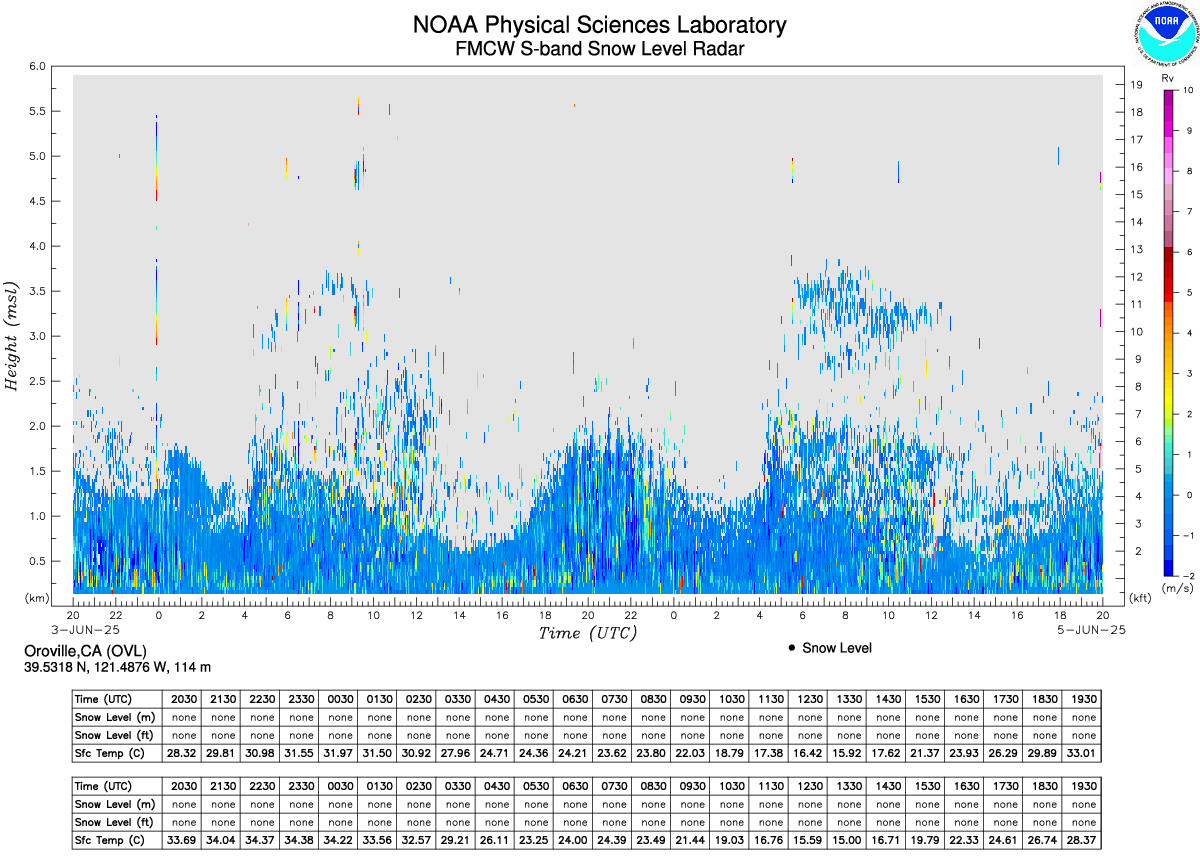| Return to CW3E Homepage |
| | Intro | California Obs | AR Forecasts | Watershed Precip | Watershed Freezing Level | S2S Outlook | | CW3E Home |
| ...GFS and ECMWF Ensemble Freezing-Level Data Are Loading... |
|
Note: Clicking the GEFS/ECMWF radio button will load precipitation-derived map data for each ensemble member allowing you to click an individual watershed to see its respective ensemble-plume diagram. Clicking the third radio button option will produce a white map, but will allow you to see both model system's ensemble-plume diagrams after you click a watershed. |
|
| Map Description: This map uses GFS and ECMWF ensemble forecasts to show the evolution of the freezing level above, within, or below a watershed's terrain, i.e., forecast near-surface temperatures being above or below freezing, and precipitation falling as rain or snow. The maps show the percent of period ensemble-mean precipitation that falls with freezing levels above/below a watershed's terrain height (i.e., near-surface temperatures below freezing) and HUC8 watershed boundaries are shown. If you click on a watershed, you will get additional information regarding the evolution of the ensemble freezing level at that watershed. | |
For more information regarding the previous bias-corrected version, please contact Brian Henn. For questions regarding this current webpage, please contact B. Kawzenuk (UCSD) or J. Cordeira (UCSD/PSU). Please contact them directly with any questions. Page last updated by J. Cordeira 18 Sep 2024 |
 |
F. Martin Ralph, PhD., Director Center For Western Weather and Water Extremes (CW3E) |
CW3E Partners California Department of Water Resources |
More Information Return to CW3E homepage |









